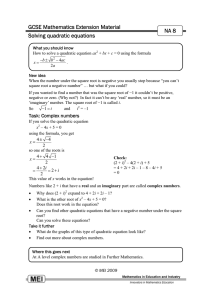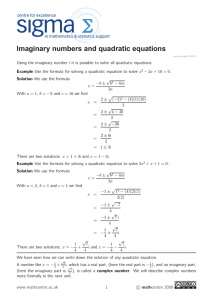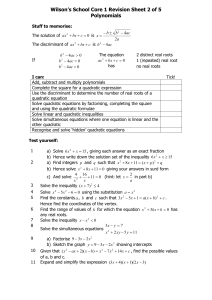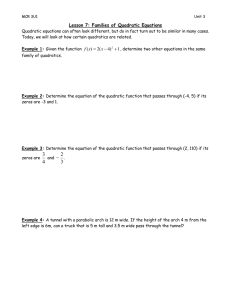Chapter 4: Polynomial and Rational Functions Section 4-2: Quadratic Equations
advertisement
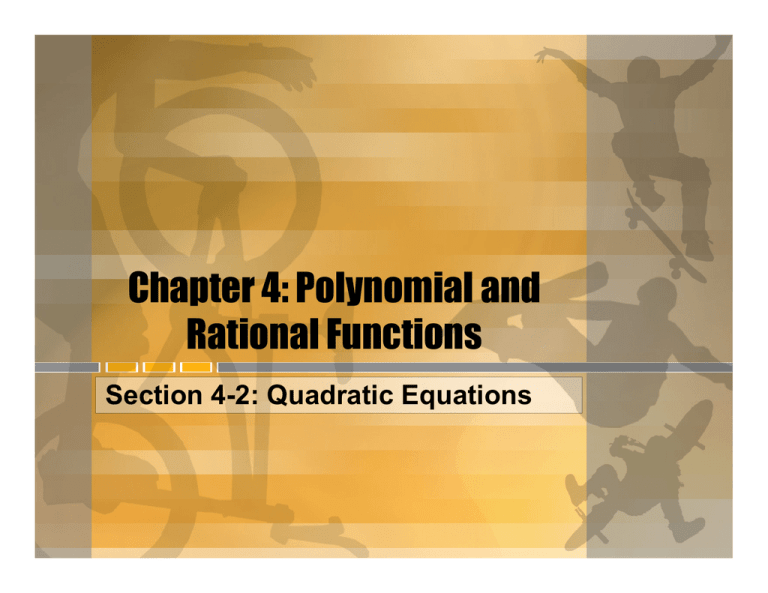
Chapter 4: Polynomial and Rational Functions Section 4-2: Quadratic Equations Solving Quadratic Equations – Finding the zeros There are 4 ways to solve a quadratic. You should be familiar with all of them from Algebra 2. Graphing: Can be difficult to graph accurately. Factoring: This is the easiest and best method. But can be used only IF the equation is factorable. Completing the Square: Works for any quadratic. Quadratic Formula: Works for any quadratic Standard Form of Quadratic •The standard form of a quadratic equation is Ax2+Bx+c=0 •The discriminant is very useful to tell us how many real roots a quadratic equation has. • B 2 − 4 AC > 0 Two distinct real roots/zeros • B 2 − 4 AC = 0 Exactly one real root/zero • B 2 − 4 AC < 0 No real roots/zeros (imaginary) Proving the quadratic formula •Given a quadratic equation in standard form, 2 + bx + c = 0 prove that ax 2 x = − b ± b −4 ac 2a bx c + =0 a a bx c x2 + =− a a x2 + b 2 c b2 ) =− + (x + 2a a 4a2 b 2 b2 − 4ac ) = (x + 2a 4a2 b =± x+ 2a b2 − 4ac 2a b ± b2 − 4ac x=− 2a Imaginary roots • Imaginary roots of polynomial equations with real coefficients always occur in conjugate pairs. • A pair of complex numbers in the form • a+bi and a-bi are called conjugates. Example #1 •Find the zeros of 4a 2 + 6a − 3 = 0 by completing the square. 3 3 a2 + a = 2 4 3 3 9 (a + ) 2 = + 4 4 16 3 2 21 (a + ) = 4 16 3 21 a+ =± 4 4 3 21 a=− ± 4 4 − 3 ± 21 a= 4 Example #2 •Find the discriminant of X2+2x-2=0 and describe the nature of the roots of the equation. Then solve the equation by using the Quadratic Formula. a=1 b=2 The discriminant is 4-4(-2)=12 so there are two distinct c=-2 real roots. − 2 ± 4 − 4(−2) x= 2 − 2 ± 12 x= 2 −2±2 3 x= 2 x = −1 ± 3 HW#26 • • • • Section 4-2 Pp 219-221 #5,12,15,16,20,21,22,25, 26,31,32,35,40,41
